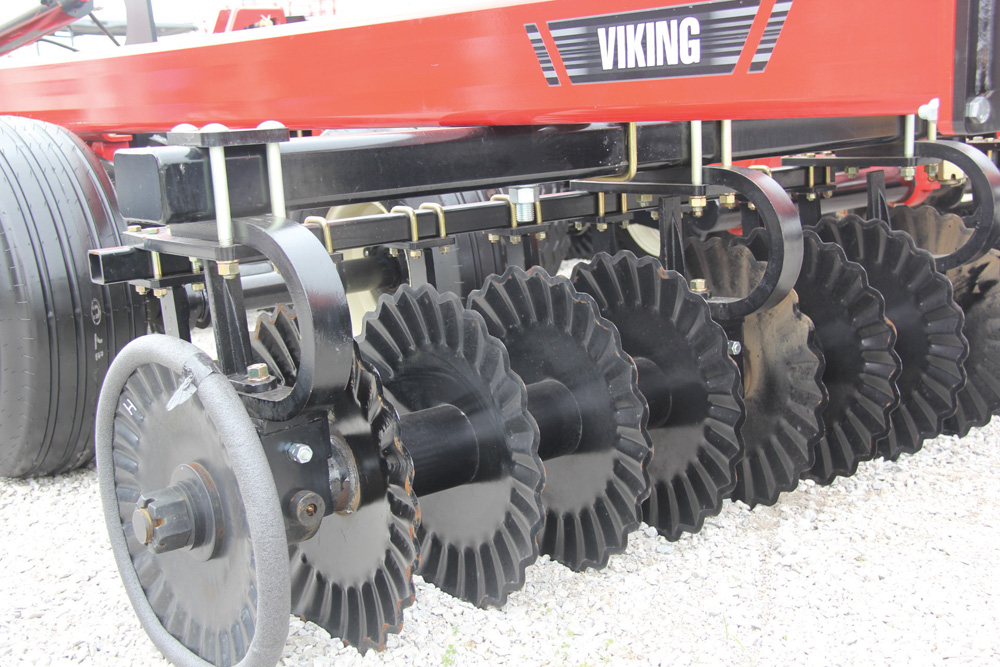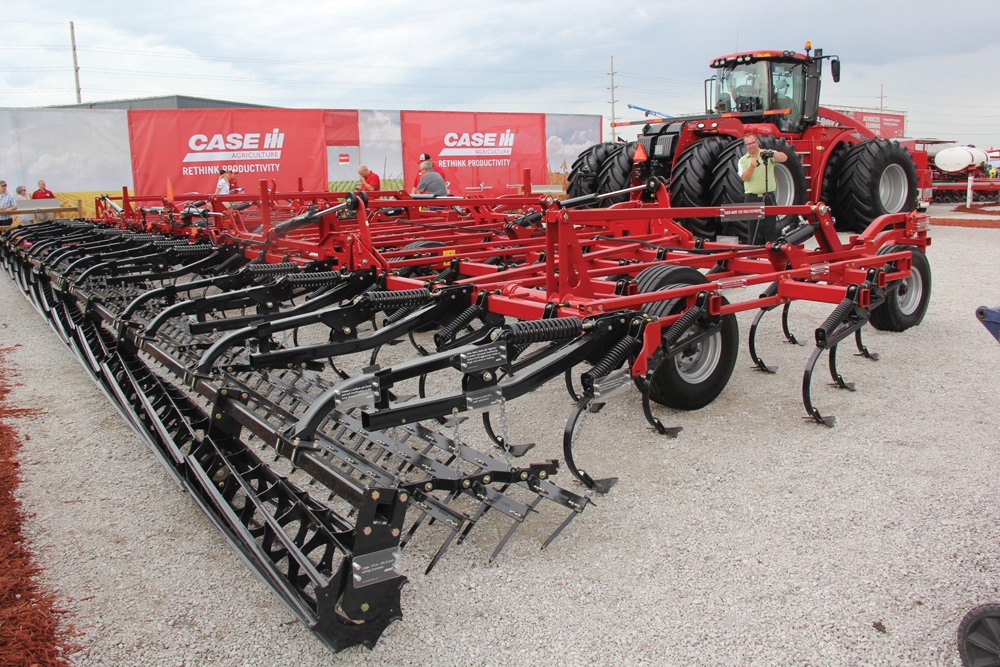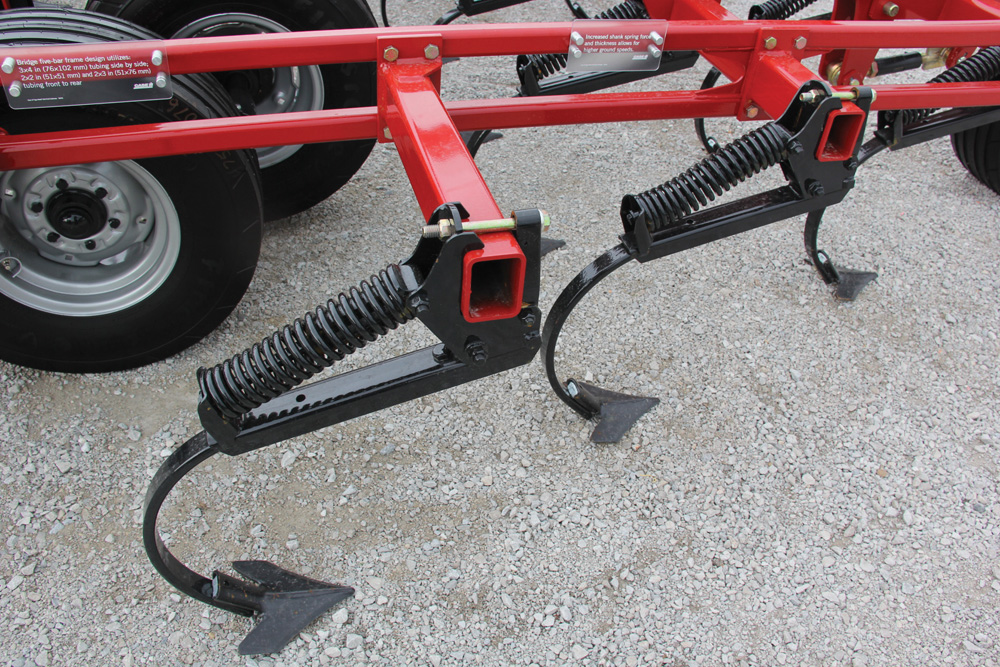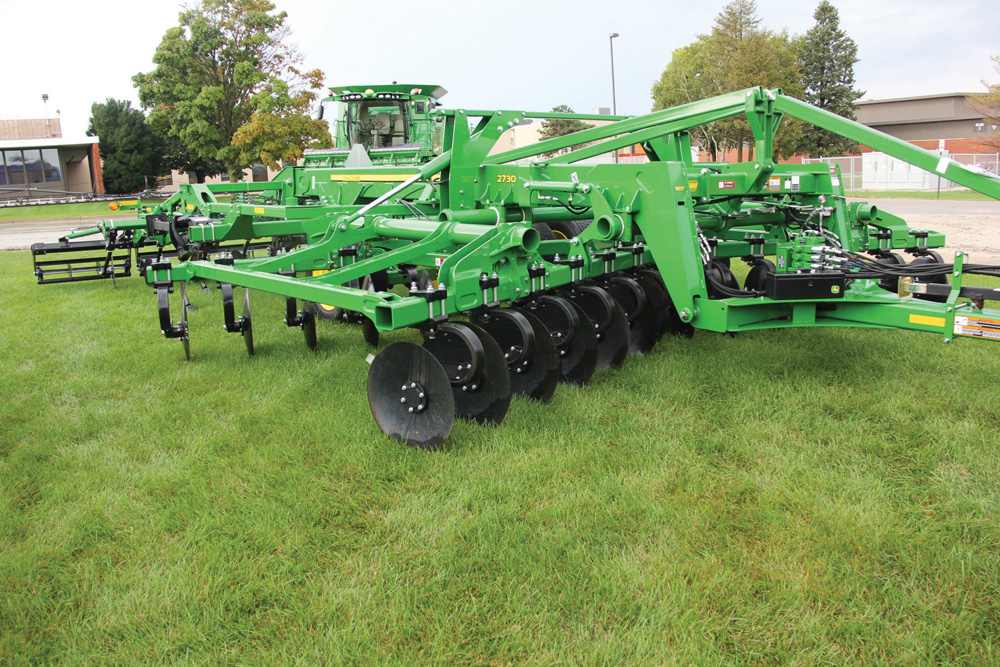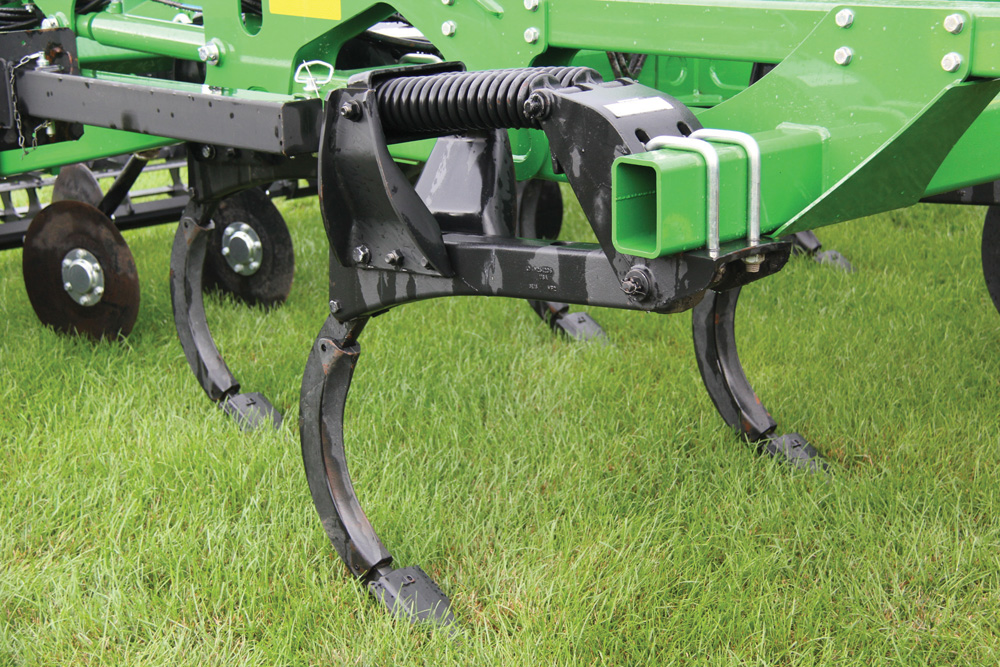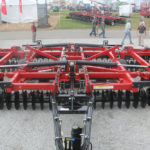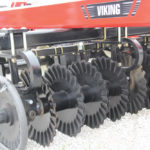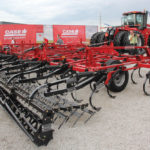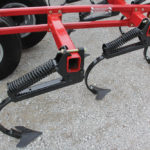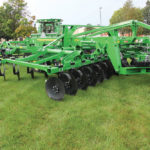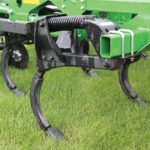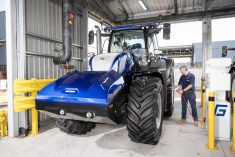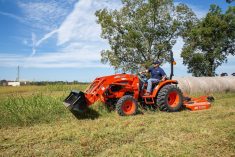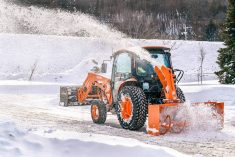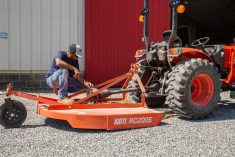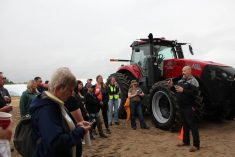
Versatile tillage 1.JPG
The “third generation” Viking vertical tillage tool from Versatile will also be available under the company’s Farm King brand as the VT3000.
Photo: Scott Garvey
Versatile tillage 2.JPG
Viking gang angles can be adjusted manually from zero to 16 degrees.
Photo: Scott Garvey
Case 255 1.JPG
The Case IH 255 Tiger-Mate field cultivator is capable of field speeds up to 10 m.p.h.
Photo: Scott Garvey
Case 255 2.JPG
Shank thickness and spring tension has been increased to allow for faster field speeds.
Photo: Scott Garvey
Deere 2730 1.JPG
Settings on the John Deere 2730 combination tillage tool can be changed in-cab and on the go.
Photo: Scott Garvey
Deere 2730 2.JPG
An updated version of John Deere’s TruSet control allows for individual row adjustments on the 2730.
Photo: Scott Garvey
With a renewed interest in tillage all across the prairies and the need to deal with higher levels of corn residue in fields across the U.S. Midwest, it’s no surprise there were some new tillage tool introductions at the U.S. Farm Progress Show in Boone, Iowa, in August. Here’s a look at what the familiar brands had at their exhibits.
Versatile
Hitched to one of its new 360 FWA tractors, Versatile proudly debuted the new Viking vertical tillage tool at its display on the show grounds. The company will also retail this machine in its Farm King implement line as the VT3000.
Read Also

Claas brings 1000 Series SP forage harvesters to Canada
In mid-August, Claas unveiled its new line of Jaguar forage harvesters at an event in Visalia, California, deep in the heart of that state’s dairy region.
“This is what we would consider a third generation vertical tillage tool,” said Trevor Jubinville, product manager for precision seeding and tillage. “The early adopters of this (VT) technology offered discs with a zero-degree gang angle. The next phase of innovation came when companies took a tandem disc and changed the gang angle slightly — but it was fixed — and put some different blades on it. With this third generation machine, we can change the gang angle from zero all the way to 16 degrees in four degree increments.”
The idea behind the adjustable gang angle is it gives the machine a wider range of uses. Set at zero to four degrees, the Viking can be used at higher speeds in the spring to warm and dry out seedbeds. At higher angles it does a better job of chopping and burying residue in the fall. And it can sink down up to five inches if a producer wants that kind of aggressive tillage, but that will put some heavy demands on the tractor, forcing it to supply eight to 10 horsepower per working foot.
“What makes this machine different from the others is, number one, that adjustable gang angle.” Jubinville adds. “Second, it’s a heavy-duty machine. It’s an eight by four main frame with six by four cross members of half (inch) wall tubing. So it’s heavy. It’s going to come in at 800 pounds plus to the foot. You need the weight to go into those hard fields in the fall.”
For this model year, the gang angle adjustments must be made manually, but Jubinville says the company is working on a hydraulic adjustment feature that will likely show up as an available option sometime in 2017. Available working widths are 28-1/2, 32, 34 and 36 feet.
“The blades are 6.5 mm (thickness) standard,” said Jubinville. “We don’t offer a thinner blade. We offer eight or nine inch blade spacing with 22 or 24 inch blades. The eight inch spacing is going to work real well with a 20 or 22 inch blade. Nine inch is going to work well with a 22 or 24 inch blade.”
The gangs turn on heavy-duty bearings that the company warranties for seven years.
Said Jubinville, “The idea is we’re not trying to force guys into a one-size-fits-all solution. We’re genuinely trying to offer something that’s going to perform well in a wide variety of conditions.”
Case IH
Christopher Lursen, tillage marketing manager at Case IH, may have felt he wasn’t exactly the centre of attention at Case IH’s exhibit during the show. Only a few steps away was the concept Magnum robotic tractor which became a people magnet, attracting a non-stop crowd around it. But the brand did have a new tillage implement to show.
The 255 Tiger-Mate field cultivator was just released prior to the show, and it will be available for delivery in time for spring 2017. It can be ordered in working widths all the way from a 22 to 60 feet. Up front, the cultivator uses a floating hitch for better ground contouring, and at the rear there are three soil re-consolidation packages to chose from.
“There are three options,” said Lurson. “There’s the four-bar coil tine, a two-bar coil tine with a roller crumbler, which is typically used in prairie soils and a three-bar spike with the Tiger crumbler.”
The 255 uses five rows of shanks to allow for improved residue flow and ensure all the soil is touched by a shovel.
“I think the biggest story with this machine is the productivity,” he added. “This machine is now capable of up to 10 m.p.h. Before, the max was eight. We’re not going with larger widths, it’s about trying to get more out of the machine we have. At 10 m.p.h. we’re looking at about an acre per minute with this 60-foot machine.”
To get that speed, the shank design required some changes over those on the previous model.
“We increased the amount of spring force on it by about 20 percent and also increased the shank thickness to hold the shank steady,” Lurson said.
John Deere
At the green brand, the story was centred around an updated implement with more digital technology to control it. Deere now has its 2730 mated with an updated version of TruSet, which controls the implement through a screen in the tractor cab. Previously, it required a GreenStar 2630 monitor, but now it can be used with its own controller, so anyone with an older John Deere tractor or one from a different brand can still get all those adjustment features.
“We’re now expanding the tractor compatibility,” said Nathan Kramer, product line marketing manger. “We’re going to have the TruSet compatibility kit. That allows us to take hydraulic flow from the tractor. All the brains will be built within our controller. We’re offering more advanced technology and features to really optimize the performance of our (tillage) tools.”
When the 2730 and TruSet pair up, Deere believes that combination gives growers an implement that can meet a wider variety of demands and offer precise, site-specific tillage that can be adjusted on the go. It is even capable of storing pre-sets to make on-the-go changes even easier.
“This (development) journey really started about three or four years ago when we reached out to our customers when we were in the final development of our combination tool,” Kramer said. “They wanted a machine that could size residue and distribute it evenly across the entire width of the machine.”
“With its four fully independent areas, starting with its front disc, ripper points, closing discs and our rear harrow attachments, it really gives us the ability to control a lot with our TruSet technology. We can adjust them all independently from one another. The TruSet technology can really ensure depth accuracy to 1/10 of an inch, in the cab on the go.”


